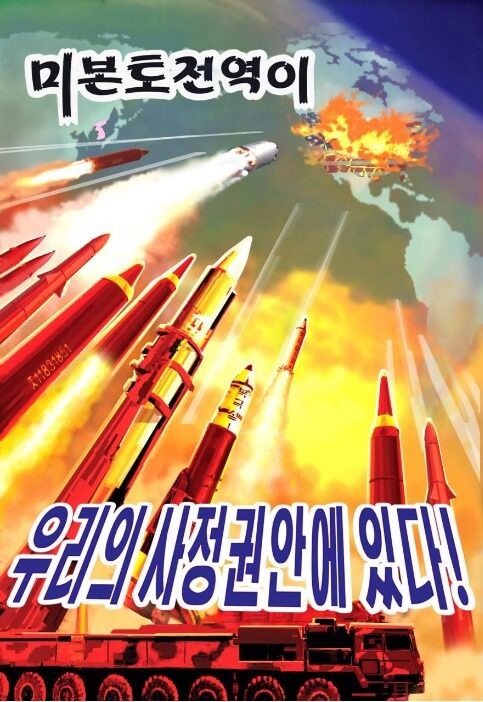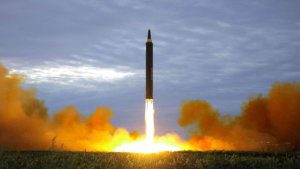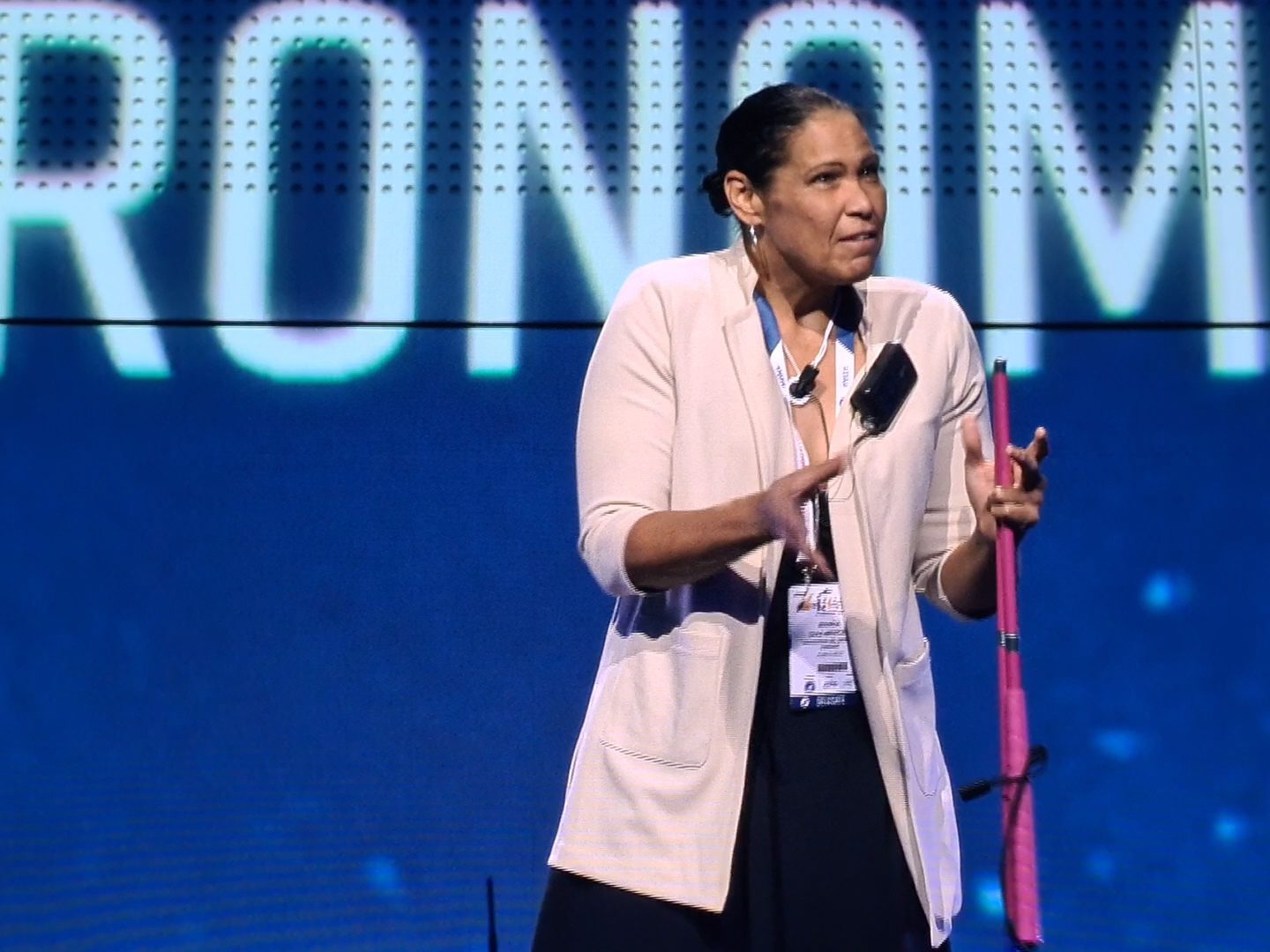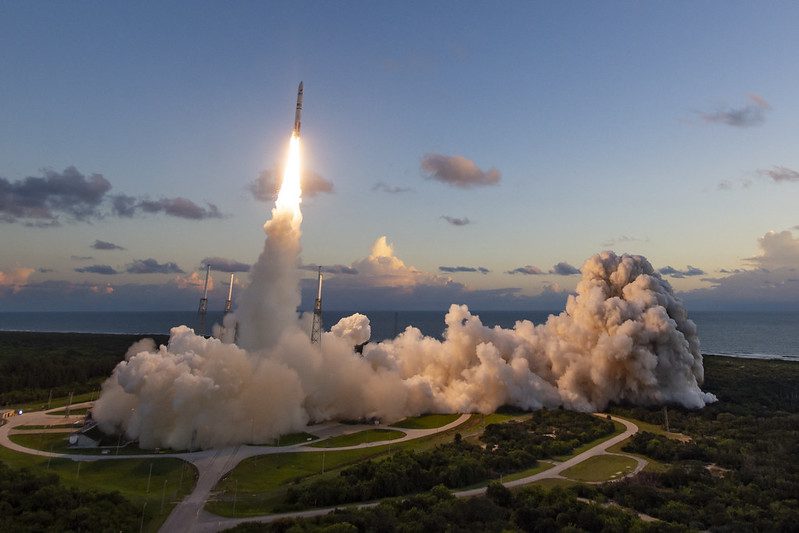The crisis over North Korea’s nuclear missile programme continued with both sides threatening each other with fearsome rhetoric. After US intelligence agencies suggested that North Korea might have perfected a nuclear warhead for its Intercontinental Ballistic Missiles (ICBM), US President Donald Trump threatened to unleash “fire and fury” on the nation. In response, the Kim Jong-un led Government of North Korea announced that it was drawing up plans for a ballistic missile demonstration with four missiles carrying dummy warheads to land less than 30km from the US base in Guam. To do so, the Hwasong-12 missiles – ballistic missiles that are slightly shorter ranged than the recently flown Hwasong-14 ICBM – would pass over Japan.

North Korea released this threating poster showing USA being targeted by nuclear armed ICBMs. Courtesy: KCNA via Reuters.com
The failure of past US administrations to prevent North Korea getting nuclear weapons technology has been succeeded by a race against time to stop it getting a practical nuclear weapon.
Except that it may already have one.
Intelligence analysts are vexed as to whether the “rogue nation” has developed the miniaturisation, guidance and re-entry technologies necessary to build a practical nuclear warhead for a missile with a range long enough to threaten the USA. Yet, in truth, apart from having to fit the equipment and nuclear explosive into an appropriately sized casing, most of this technology is not really needed for a simple air-dropped nuclear weapon. This would probably be fission-class Atomic bomb but North Korea claims to have developed a much more powerful thermo-nuclear type Hydrogen-bomb as well.
However, it would not be the USA that is threatened by such a free-fall Atomic bomb since North Korea does not have an aircraft with sufficient range to make such a long-range nuclear attack (assuming it does not try to repurpose a civil airliner for a one-way nuclear strike). It is its nearest neighbours, South Korea and Japan, that would be in range of a nuclear strike by North Korea’s aged, but still very fast, Mig-21 supersonic fighter-bombers. Such a strike on Seoul would be nearly impossible to intercept given its proximity to the border and the very short flight time.
Even without that, in the event of a military conflict, South Korea’s capital Seoul would be vulnerable to a massive conventional artillery barrage from North Korea – albeit that most of the artillery and air force jets would be destroyed by satellite-targeted US conventional weapons within a few days of any conflict starting. As such, North Korea would undoubtedly lose such a war – assuming that China refrained from supporting it.
Thankfully, some relief has been provided for jangled nerves in the tension-filled region as North Korea looks likely to delay its missile test targeted near Guam. For while the Kim Jong-un regime may be the atheistic equivalent of IS-style Islamic extremism, unlike the latter’s keenness for suicidal martyrdom, there remains logical reasoning and a basic survival instinct in Pyongyang.
However, despite all the economic and political pressure on it, North Korea is expected to resist engagement in real disarmament negotiations. This could eventually result in a formal ultimatum from the USA, given that time is running out. For while the Americans will try diplomacy and sanctions first to try to achieve disarmament President Trump and leaders of the US armed forces will want to fight sooner rather than later. They know that if they wait much longer, North Korea will soon have its own nuclear-armed ICBM capable of hitting the continental USA.
In the meantime, there will be pressure on the USA to offer South Korea and Japan a formal “nuclear umbrella” promising nuclear retaliation in the event of a North Korean nuclear strike on those nations. Such nuclear deterrence might make North Korea pull back from the brink of using any nuclear device if a military conflict does break out, but it may not stop a war.
Update on 29 August 2017: North Korea has subsequently made a test flight of a Hwasong-12 missile which actually overflew the North Island (Hokkaido) of Japan a few minutes after its launch from a site near Pyongyang at 2058 GMT on 28 August. After a 2,700km flight which reached at altitude of 550km, the missile broke up into three pieces and fell into the sea 1,180km beyond Japan. This missile test is viewed as a highly provocative act. For while North Korea has previously overflown Japan with rockets, those were satellite launch attempts rather than belligerent demonstrations of military capability.

Hwasong-12 launch which flew over Japan minutes later. Courtesy: KCNA via BBC
In a separate development, North Korea has threatened the United Kingdom with a “miserable end” if it takes part in joint military exercises in the region later this year.
Comment by David Todd: The disarming of the Gaddafi regime’s nuclear and biological weapons programmes in Libya and its subsequent fall after NATO air attacks (admittedly made to stop it killing its own people) have led the government of North Korea to a logical conclusion: it needs a nuclear deterrent of its own in order to prevent similar international interference.
However, North Korea’s record of piracy including the deliberate sinking of foreign ships, assassinations and kidnappings of innocents abroad (including the recent murder of Kim Jong-un’s own half brother), along with its unjust state executions, prison camps and the starvation of millions of its own people, have led many to regard the current regime as a dangerous and evil “rogue state” – one that is unwilling to comply with even the basic tenets of human rights and international law. As such, the US government is unlikely to let such a regime gain the ability to strike it with nuclear weaponry. So, unless a peaceful resolution can be found, the world risks a highly destructive war between these two nuclear-armed states and their allies.
Although many have criticised Donald Trump’s ill-judged and emotive language in his warnings to North Korea as being more likely to trigger such a conflict, the Republican President has received unexpected support from the former Democrat Vice President, Al Gore.
Gore remains a fierce critic of the Trump administration’s decision to withdraw from the Paris Accord and its denial of climate change’s likely causes (Trump has even banned government officials using the phrase “climate change”). Yet he has defended Trump over the North Korean crisis, noting that it has been building for years. Gore further explained that it was the failure of past world leaders (US Presidents George W. Bush and Barack Obama, as well as presumably some of China’s recent leaders) that had resulted in the current dangerous situation. He went on to praise the Trump administration’s diplomatic success in convincing the US Security Council to unanimously decide to impose more sanctions as a more peaceful way to attempt to force North Korea back to the negotiating table.
While the current crisis may not be President Trump’s fault, he has inherited it and now has to solve it. As such, many US citizens might just be wishing that they had a wiser, less erratic and less forthright leader in charge, whether to increase the likelihood of a peaceful outcome, or to prosecute a successful war if one becomes necessary.
Likewise, while North Korea’s leader Kim Jong-un often receives mass public adulation from his grateful fellow citizens – by the way, since last year, sarcasm is now officially banned in the country – the people of the (not-so) Democratic People’s Republic of North Korea might similarly want to change their own “dear leader”. If they were allowed to do so, of course.





